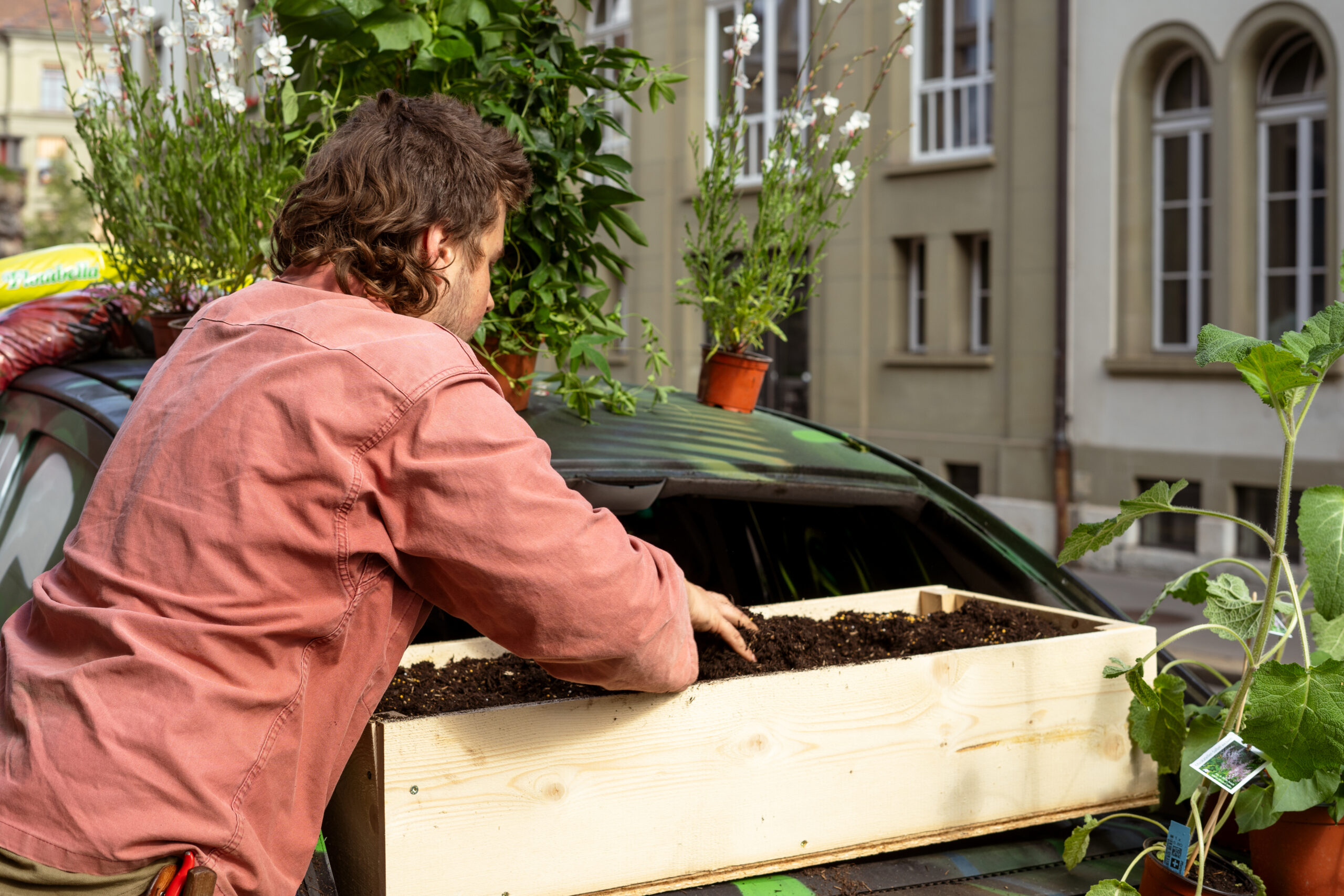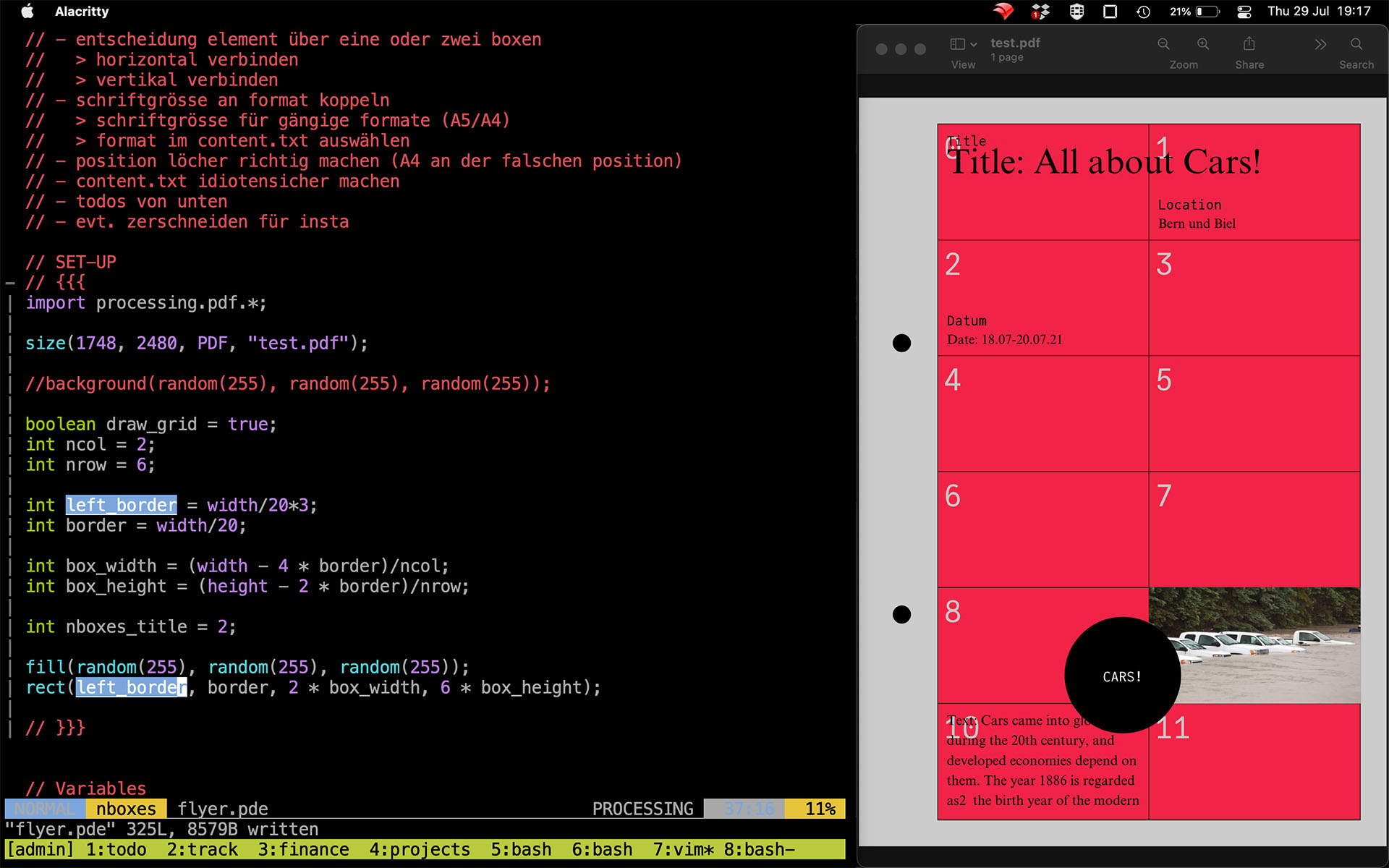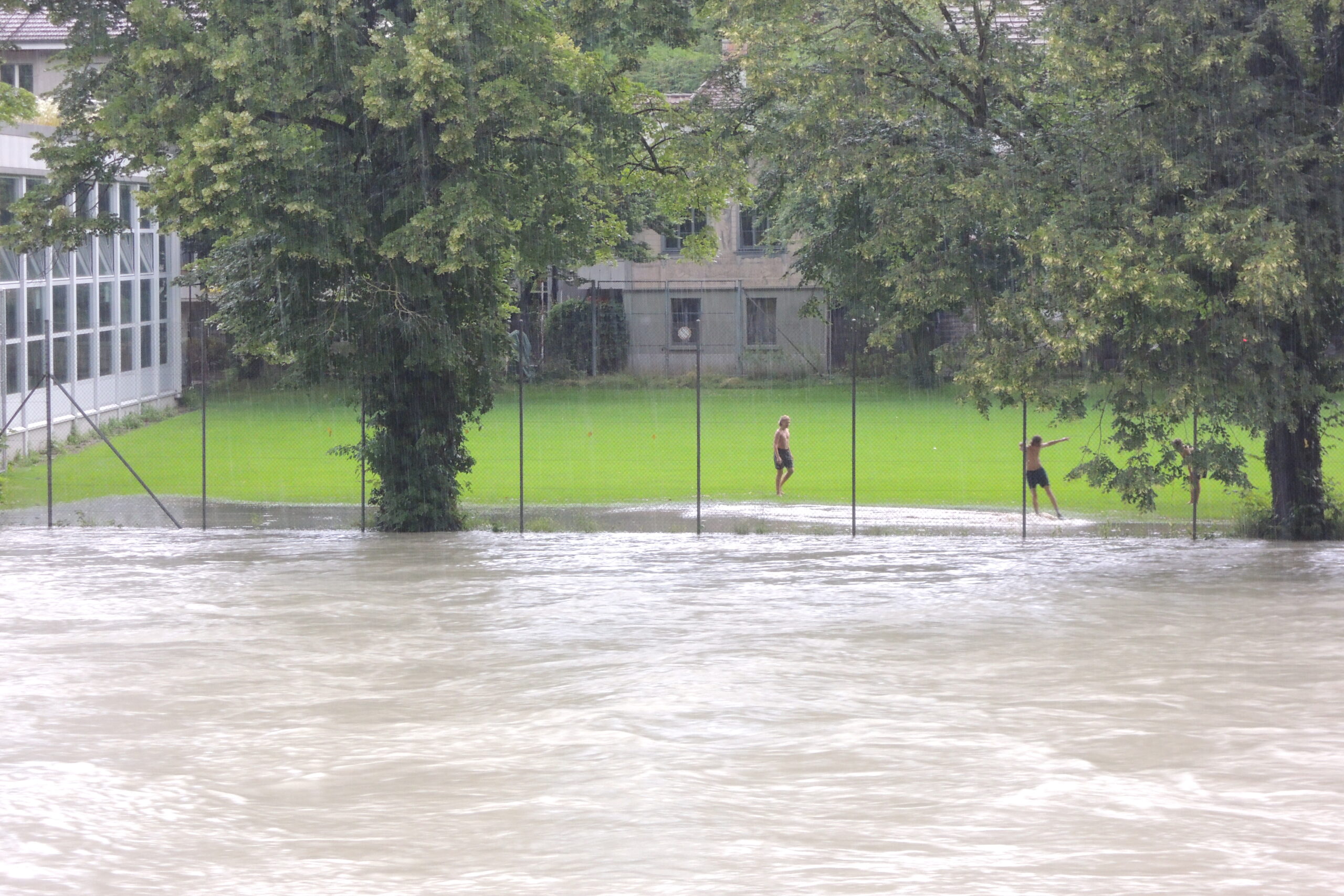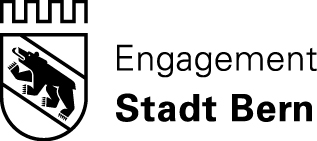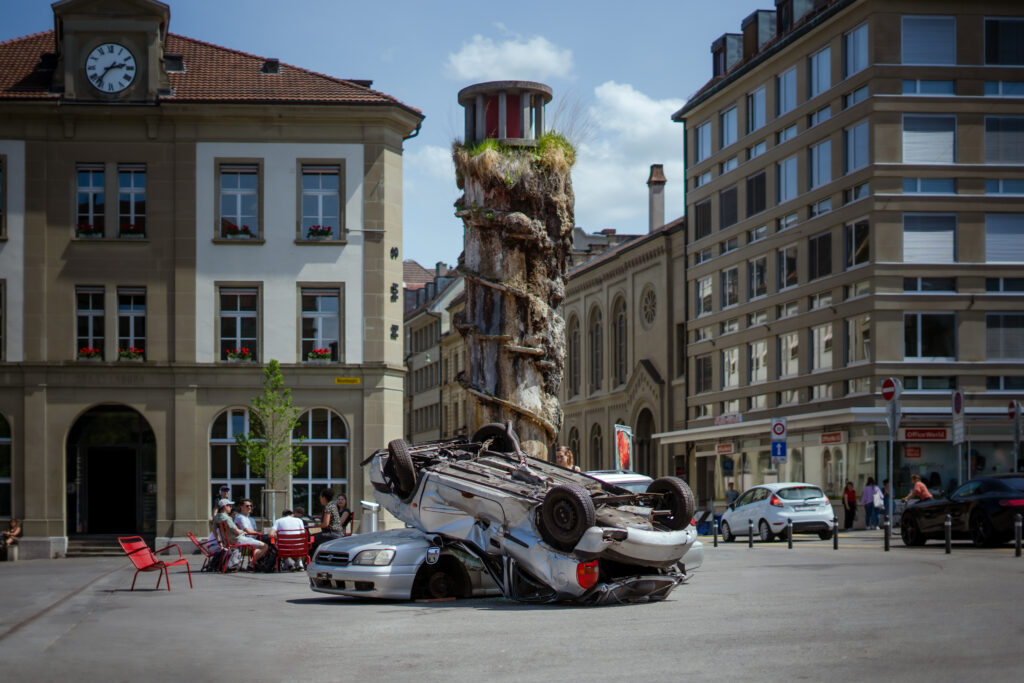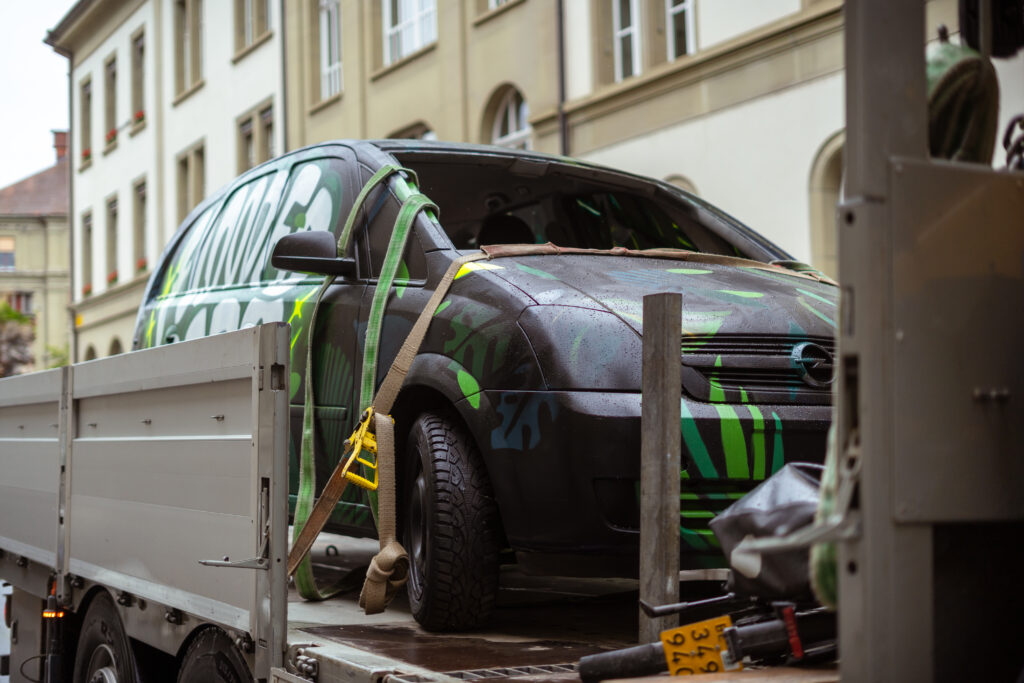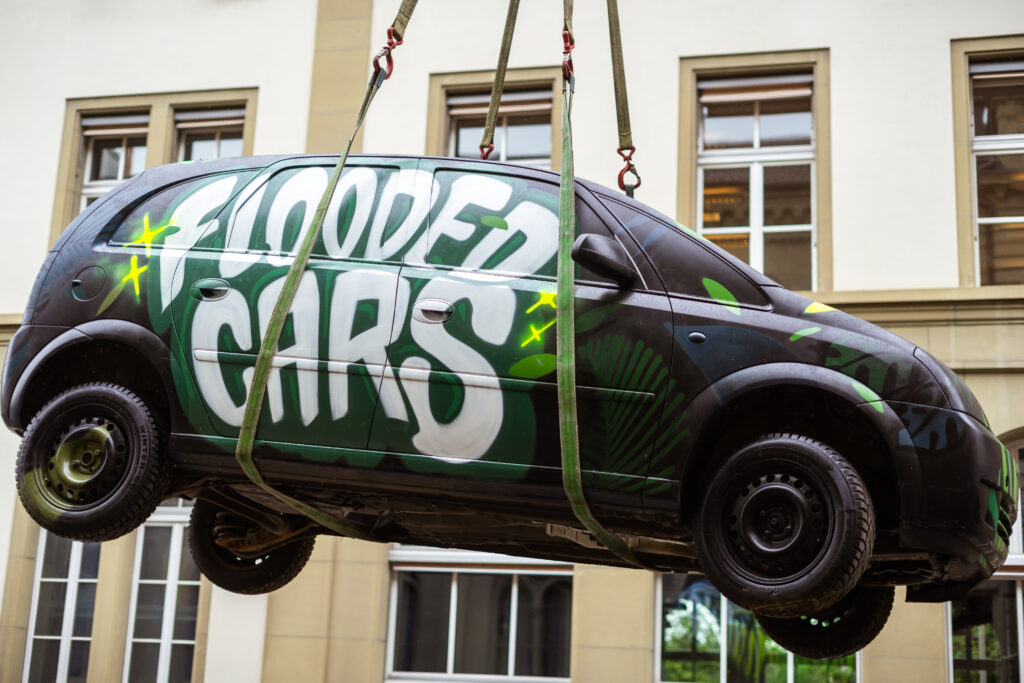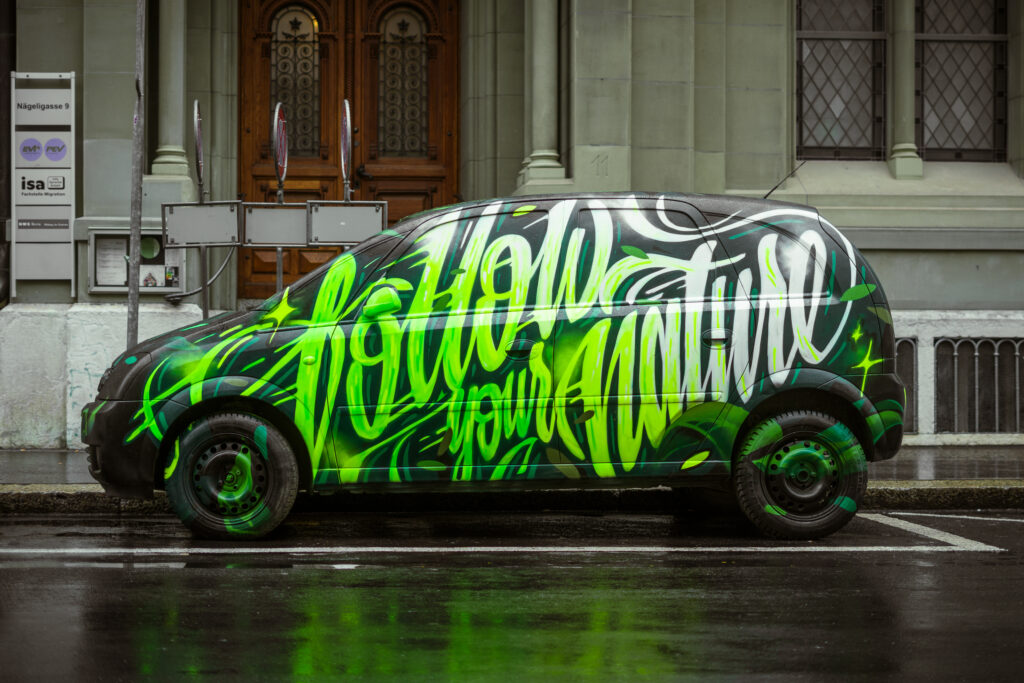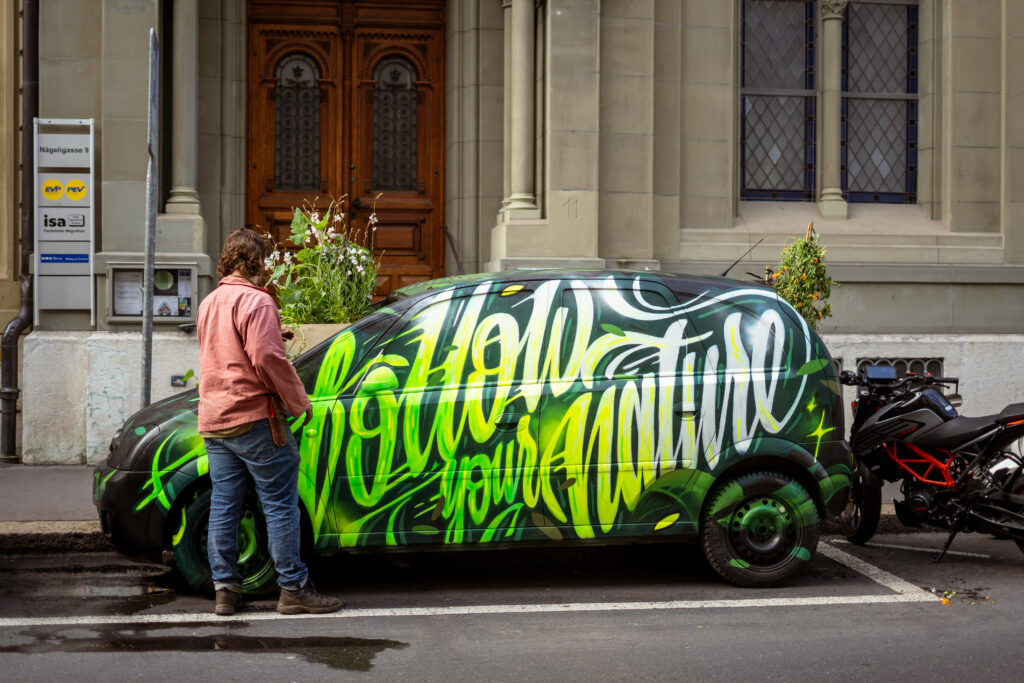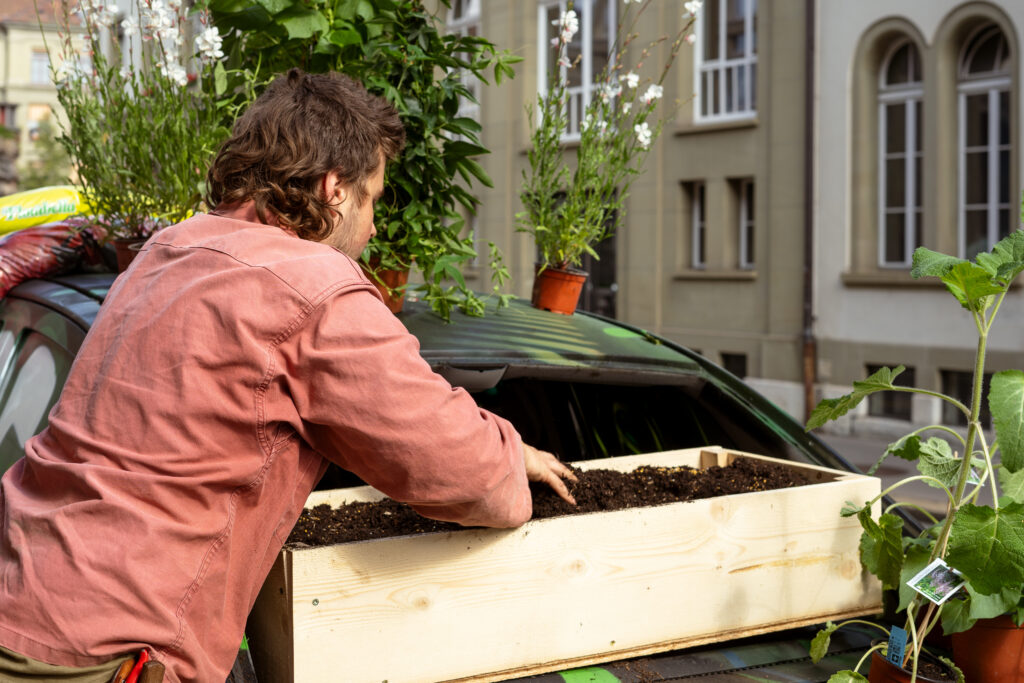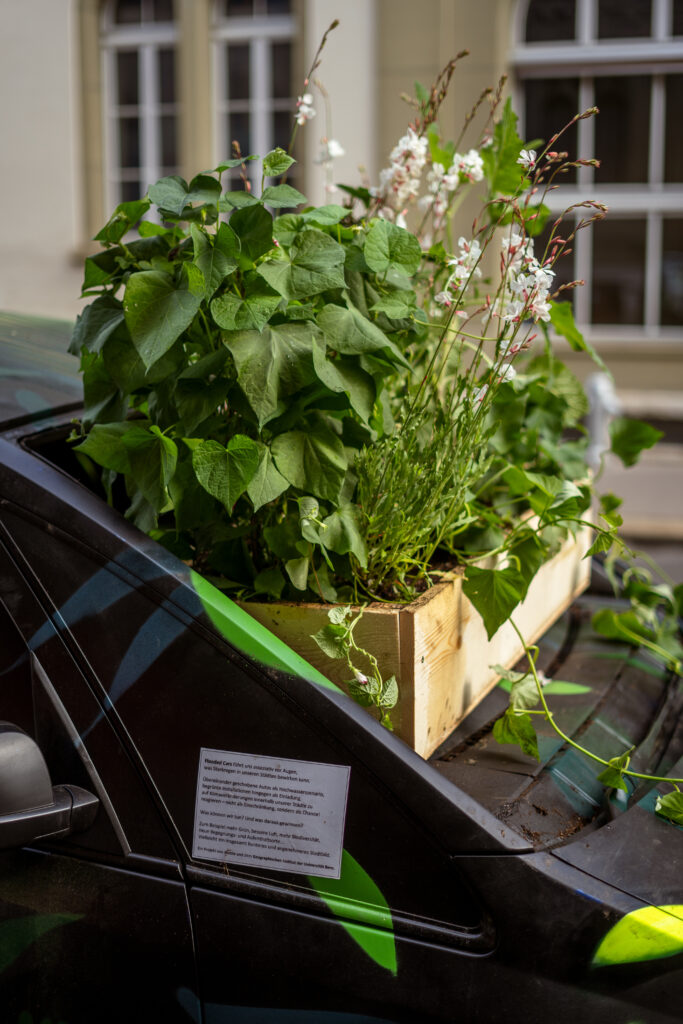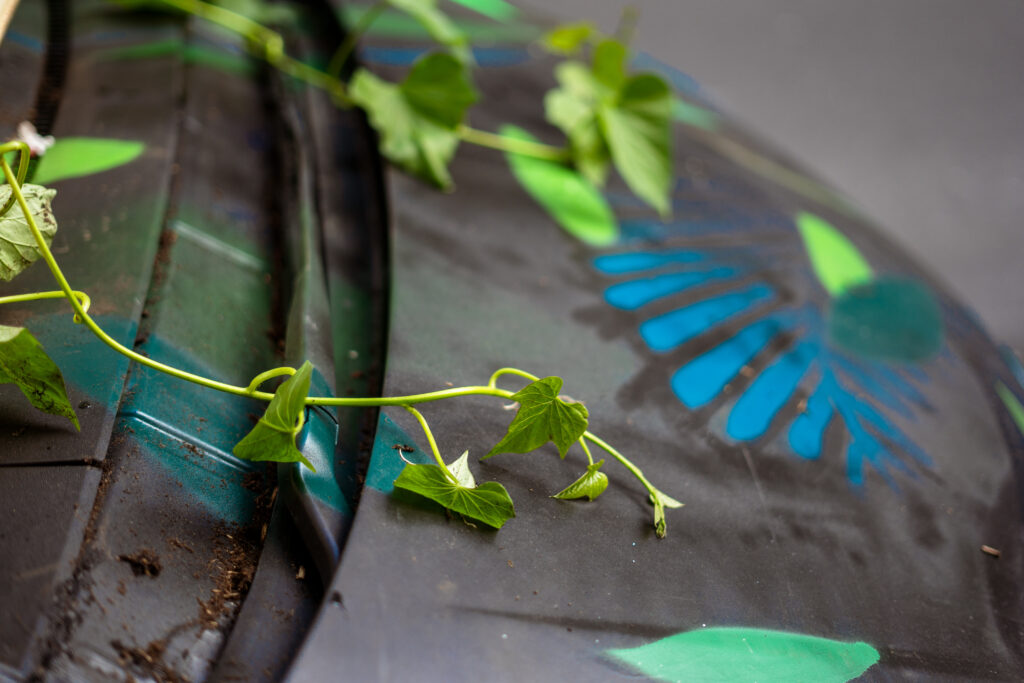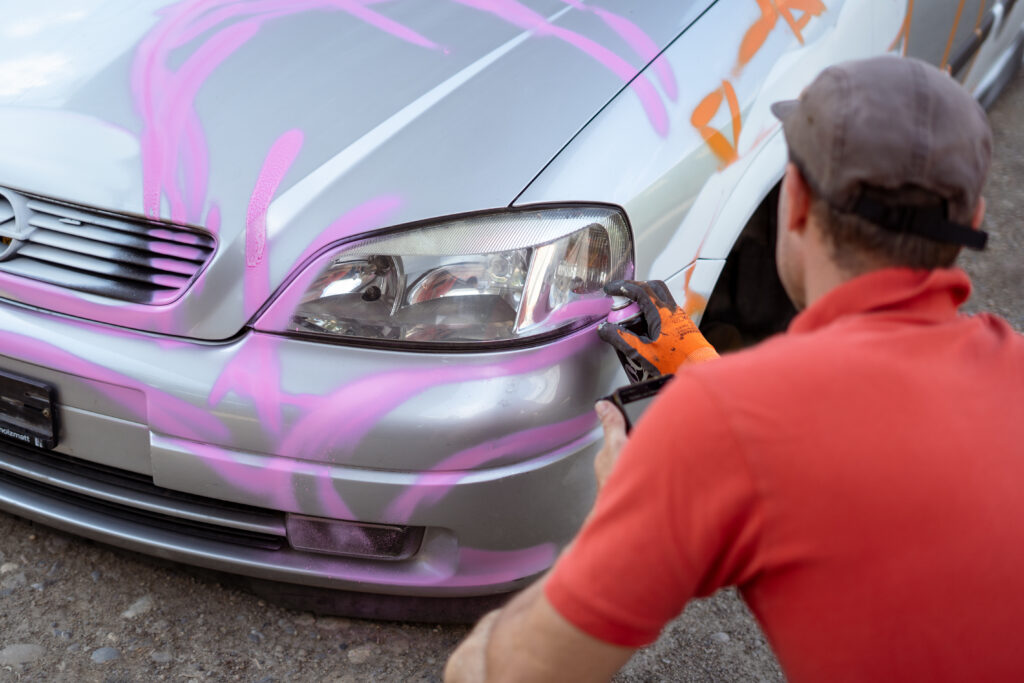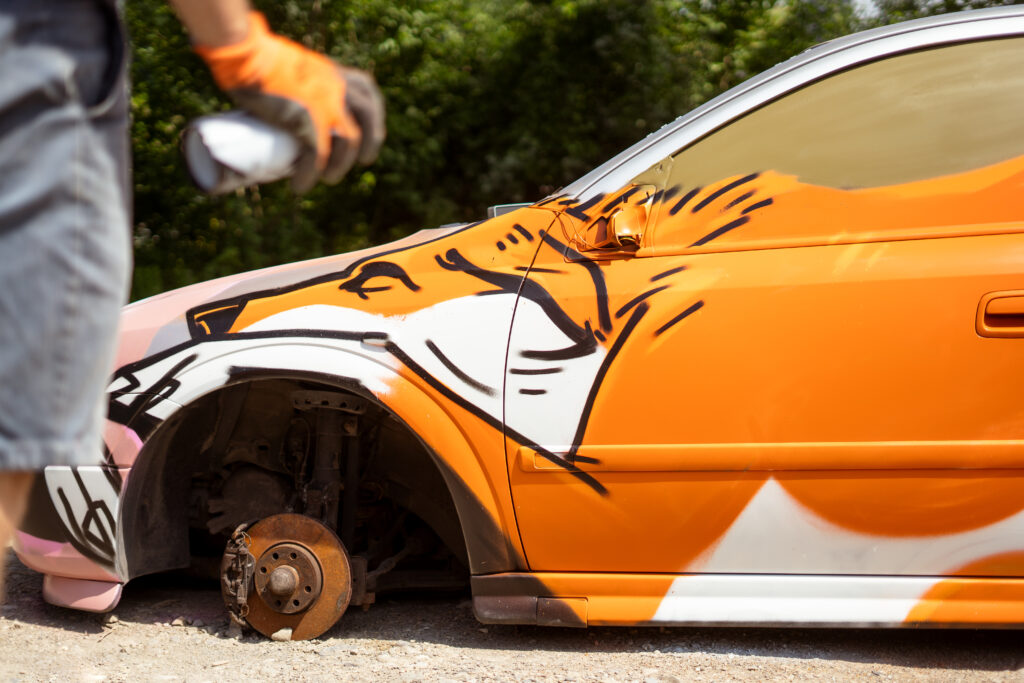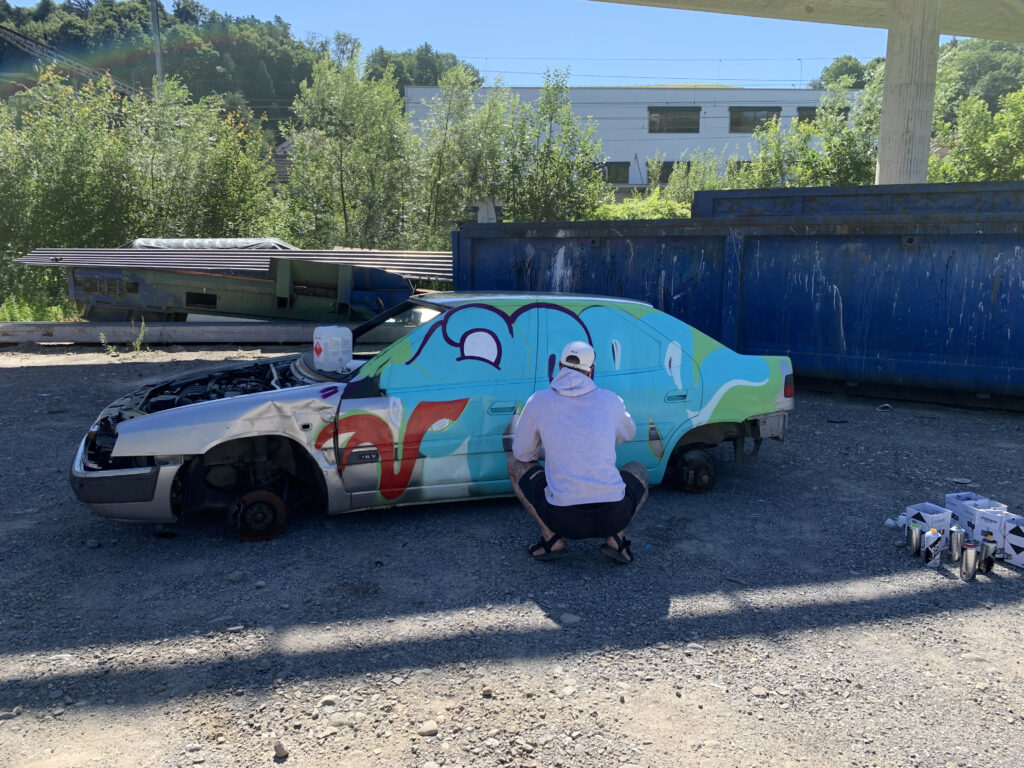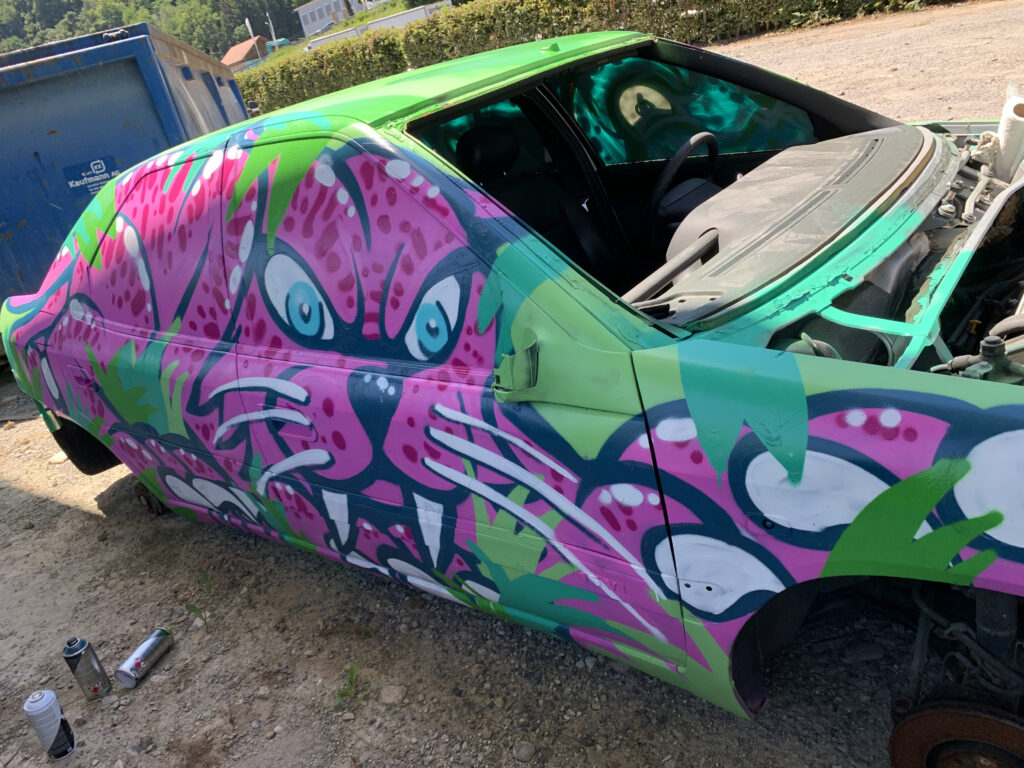Flooded cars – an associative allusion to the rethinking and redesign of urban space in times of
climate change.
During the last decades, automobile traffic and a one-dimensional conception of urbanity have essentially shaped our cities. Today we realize that these cities are poorly prepared for weather extremes.
But, instead of burying one’s head in the sand and thinking bad luck, there is nothing one can do about it, we are all invited to discover potentials in our cities. Potentials that not only lead to a better microclimate, but also offer the possibility to focus on people and their needs, to create lively places for encounters and urban oases with more nature. Every action taken, no matter how small, can change something.
For the project Flooded Cars, motile joins forces with a landscaper and graffiti artists. Junk cars and/or car parts will be piled up in the city as if they had been washed up by a flood. With green planting these cars over time come to life and happen to transform into a public garden, inspiring people to become active themselves. In addition, the scrap heaps offer their bodies for graffiti breathing new life into their dreary existence
The piled up cars show us flood-prone areas in the city of Bern, the designed cars point out dispensable street areas that can be transformed into natural areas. Protection against heavy rain floods and heat protection go hand in hand.
Cities are challenged to consider increasing heavy precipitation in their planning. The “sponge city” absorbs heavy rain or channels it into infiltration areas without causing damage. In dry periods, the evaporating water can cool the surrounding area. The city of Copenhagen took a big step toward a cloudburst management plan. This plan enabled the massive unsealing of traffic areas and the creation of attractive social spaces. In a climate-neutral city, a lot of traffic space will be freed up; this holds potential for implementing many different visions:
- Urban traffic can be made sustainable.
- Freed-up traffic areas can be used communally.
- Stress-free encounters between people will be made possible.
- Biodiversity can also be promoted in cities.
The city of Bern is already well on its way with the first examples of promoting green spaces and encounter zones. Citizens are also organizing themselves and shaping their urban environment themselves, for example by demanding and helping to shape encounter zones. The project Flooded Cars wants to show that it is possible to go many steps further.
The first Flooded Car will find Waisenhausplatz on May 17, 2022.


